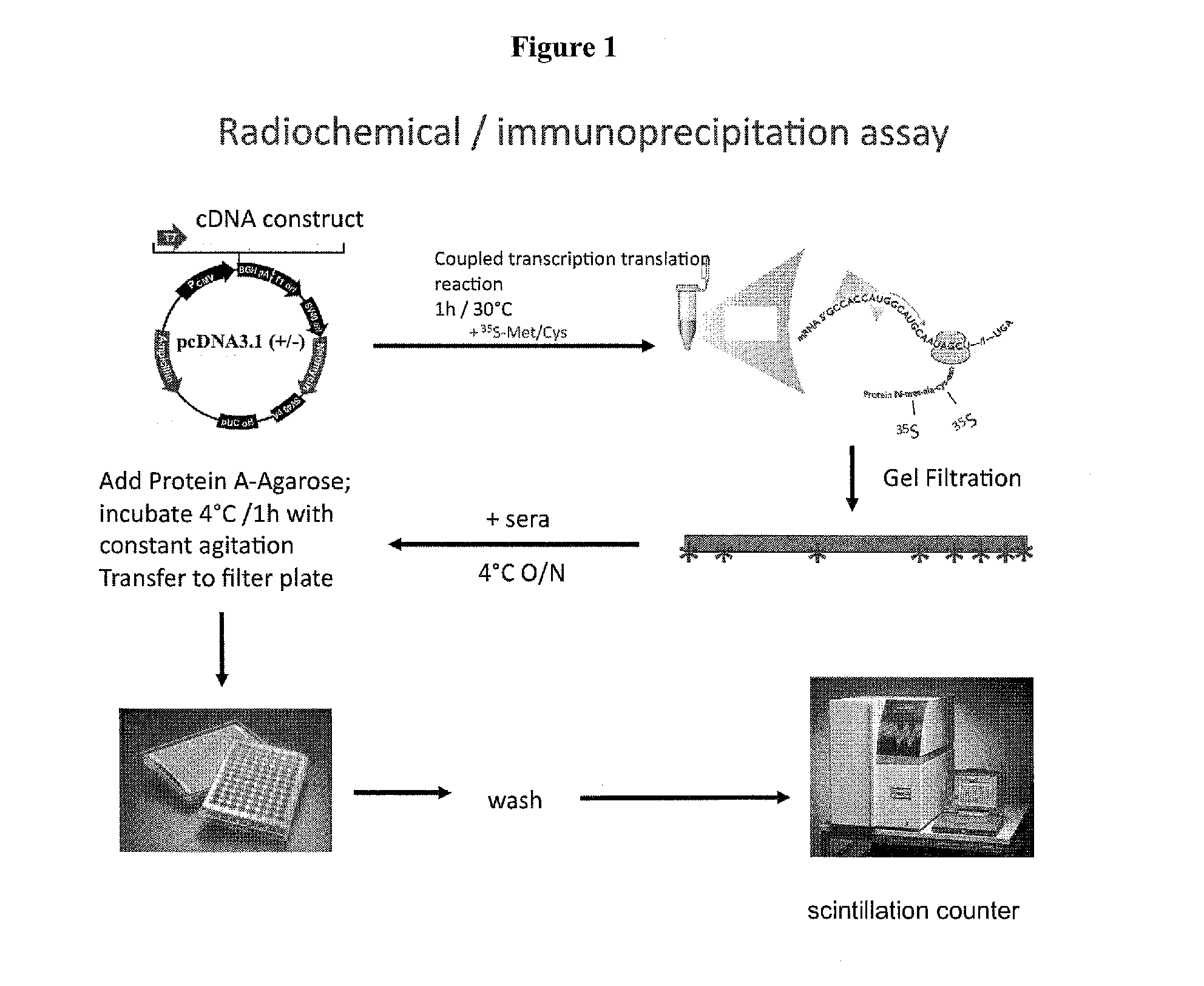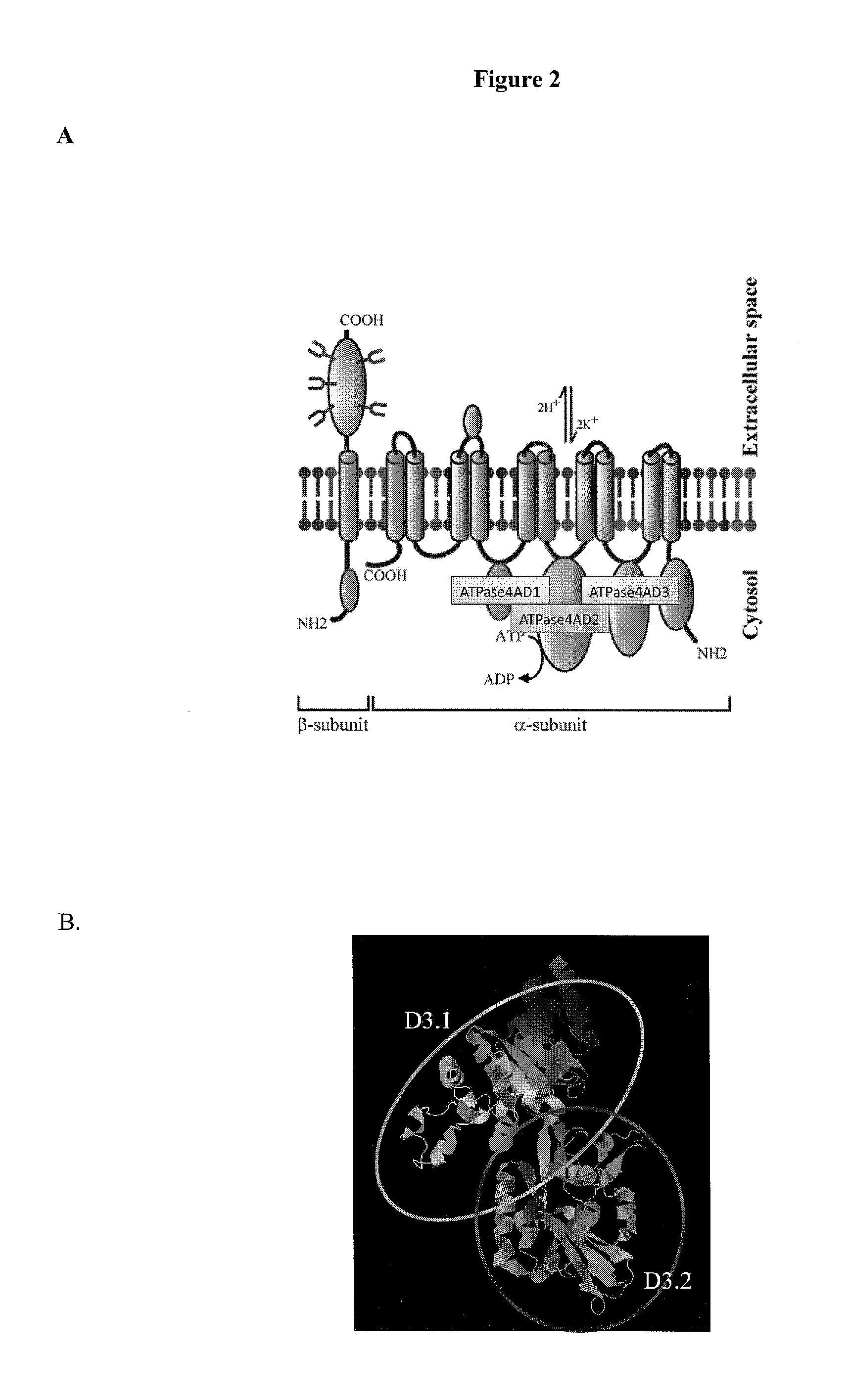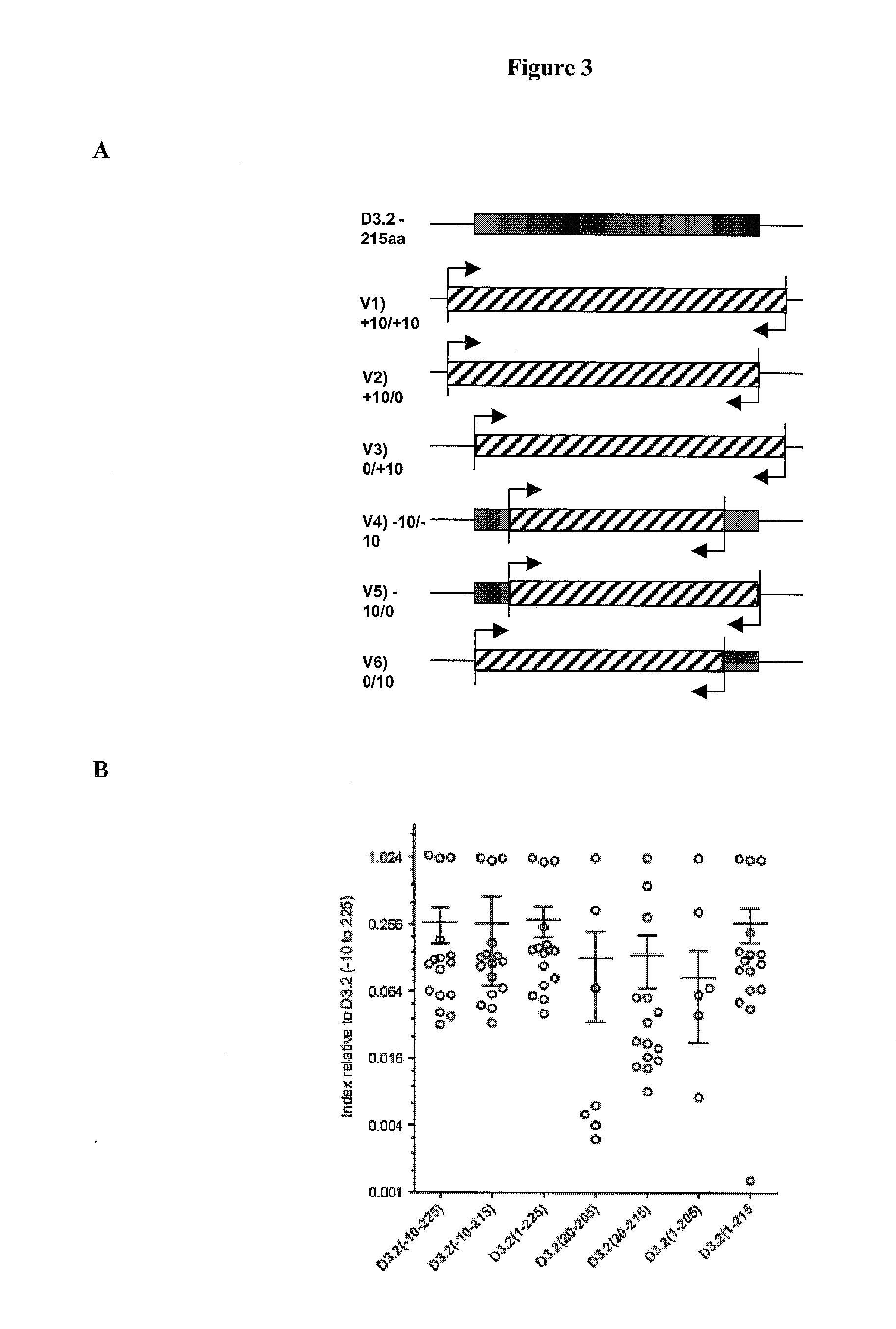Diagnosis and treatment of autoimmune disease
a technology for autoimmune diseases and diagnosis, applied in the direction of immunoglobulins, instruments, peptides, etc., can solve the problem of not becoming sufficiently sensitive to identify early phase patients
- Summary
- Abstract
- Description
- Claims
- Application Information
AI Technical Summary
Benefits of technology
Problems solved by technology
Method used
Image
Examples
example i
Immunoprecipitation: Basic Agarose Technique
[0234]1. Lyse cells and prepare a biological sample.[0235]2. Attach antibody to agarose by contacting with a biological sample.[0236]3. Incubate solution with antibody against a protein of interest (i.e., for example, an ATP4A D3.2 antigen).[0237]4. Precipitate the complex of interest by adding Protein A thereby removing it from bulk solution.[0238]5. Wash precipitated complex several times. Centrifuge each time between washes and then remove supernatant. After final wash, remove as much supernatant as possible.[0239]6. Elute proteins from solid support (i.e., for example, by using low-pH or SDS sample loading buffer).[0240]7. Analyze complexes or antigens of interest. This can be done in a variety of ways:[0241]a. Quantitating a radioactive label using a scintillation counter.[0242]b. SDS-PAGE (sodium dodecyl sulfate-polyacrylamide gel electrophoresis) followed by gel staining.[0243]c. SDS-PAGE followed by: staining the gel, cutting out i...
example ii
Commercial ELISA Versus ATP4A D3 Radiochemical / Immunoprecipitation Assay
[0245]Sera from 94 ABG patients were assayed by conventional ELISA and the ATP4A D3 radioimmunoprecipitation assay described above. An excellent concordance was observed for high titer samples but the ATP4A D3 radioimmunoprecipitation assay was more sensitive than the conventional ELISA for low and moderate titer samples (46 vs 13). See, FIG. 5. Further, the ELISA method showed 7 false positives.
example iii
ATP4 Radioimmunoassay
[0246]Serum samples were acquired after informed consent from patients, relatives and controls attending The Barbara Davis Center in compliance with IRB-approved protocols. Radioimmunoprecipitation assays (RIAs) were performed according to published procedures using ATP4A derivative antigen probes. Wenzlau et al., “The cation efflux transporter ZnT8 (S1c30A8) is a major autoantigen in human type 1 diabetes”Proceedings of the National Academy of Sciences of the United States of America USA 104:17040-17045 (2007).
[0247]Assays were conducted with 16 matched control samples and a pool of human sera with high-titer ATP4A antibodies. Cut-off indices were determined by the mean+ / −5 SD of the intra-assay control values. The immunoprecipitation index was calculated by: sample−negative control mean / positive control mean−negative control mean.
PUM
| Property | Measurement | Unit |
|---|---|---|
| Fraction | aaaaa | aaaaa |
| Fraction | aaaaa | aaaaa |
| Fraction | aaaaa | aaaaa |
Abstract
Description
Claims
Application Information
 Login to View More
Login to View More - R&D
- Intellectual Property
- Life Sciences
- Materials
- Tech Scout
- Unparalleled Data Quality
- Higher Quality Content
- 60% Fewer Hallucinations
Browse by: Latest US Patents, China's latest patents, Technical Efficacy Thesaurus, Application Domain, Technology Topic, Popular Technical Reports.
© 2025 PatSnap. All rights reserved.Legal|Privacy policy|Modern Slavery Act Transparency Statement|Sitemap|About US| Contact US: help@patsnap.com



